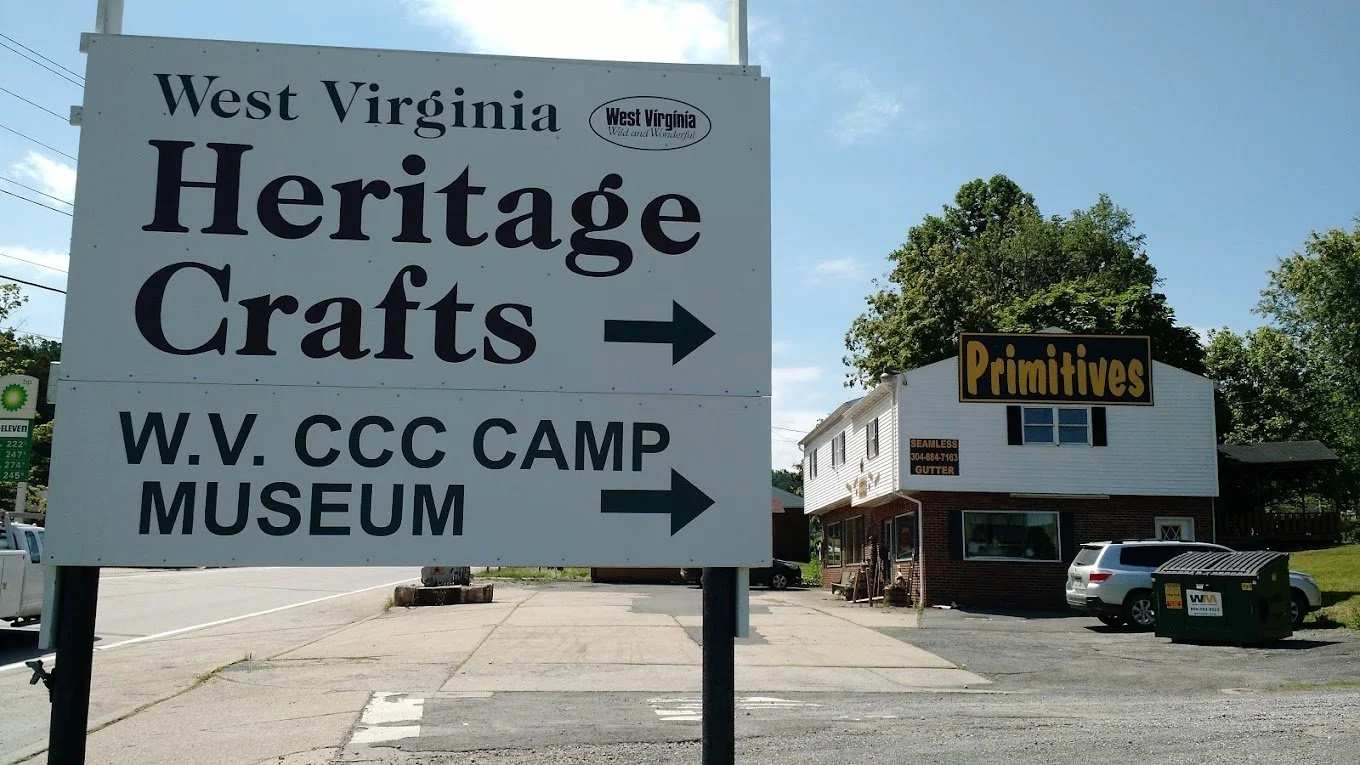Clarksburg’s Civilian Conservation Corps
From the West Virginia Encyclopedia
West Virginia boasted 65 CCC camps and two summer camps housing 55 different companies. Most of the camps were located in the Allegheny and George Washington national forests. These companies worked on reforestation and conservation projects; fought forest fires; built shelters, fire towers, fire stations, roads, and trails; strung electric and telephone lines; and planted thousands of trees.
The West Virginia state park system owes much to the CCC. Many of the early state parks were built by the CCC boys. The buildings, pavilions, and scenic overlook at Coopers Rock State Forest were built by enrollees, for example, as were the administration building, stone cabins, swimming pool, stone culverts, and bridges at Watoga State Park. Cabins, trails, and other recreational facilities were constructed using rustic architecture by the CCC at Babcock, Lost River, and Cacapon state parks, as well as Oglebay Park. The reservoir area for Bluestone Dam was cleared with CCC labor.
Educational activities also played a major role in the enrollee’s daily routine. Camps were furnished with libraries, and classes were held to teach enrollees vocational skills and provide basic educational needs. They were also permitted to take high school and college classes. More than 55,000 youth participated in the Civilian Conservation Corps in West Virginia between 1933 and 1942. Their built-to-last construction techniques in our parks and forests will last as a testimony to their era for generations to enjoy.
About the Civilian Conservation Corps in West Virginia - an excerpt from Written on the Land by Dr. Robert E. Anderson
On the heels of the "Roaring Twenties" and following the market crash of 1929, the Great Depression engulfed America and flowed unchecked across our Land. Economic hard times were everywhere. Many Americans became homeless. Families were split up; forced to live apart. Children became orphans. There was little gainful employment. To help ease the unemployment situation, one of the first things President Franklin Roosevelt did in office, was to establish the Civilian Conservation Corp, the CCC. He did this with a stroke of a pen on March 31, 1933.
The purpose of this CCC program was to put unemployed young men to work in useful, needed conservation projects around the country. The plan was swiftly put in motion. Within 3 months, over 275,000 enrollees and supervisors were signed up across the nation and began work on critical conservation projects planned by foresters, or, as the case might have been, park service rangers, soil conservationists and extension educators.
In the 9 years from 1933 until the CCC program phase-out in 1942, there were over 3 million enrollees and more than 1,600 camps throughout the country. Many CCC projects included fire-fighting, tree-planting, road-building, development of parks, forests and erosion control of farm land...Conservation projects quite evident, as we travel the land, today. The good works of the CCC in one state could be mirrored by the many achievements of the CCC in any state.
The late U.S. Senator Jennings Randolph...in Congress when it all began and a tireless supporter of the CCC concept...said in 1983: "That program helped lift America out of the darkness of Depression and into the sunshine of better times."
The book Written on the Land takes a close look at what the CCC program did for West Virginia and what legacies her "Boys" left...on the landscape; lasting conservation hallmarks written on the land.
The first call for mobilization of the Civilian Conservation Corps came in the neighboring state of Virginia on April 17, 1933 when Camp Roosevelt was established. Soon, there were CCC camps in every state. In West Virginia, the earliest camps were activated on May 20, 1933 in Tucker and Randolph Counties. Altogether, there were 67 CCC camps and 55,000 enrollees who served in the Mountain State over the nine year span of the CCC program.
Preface - Written on the Land by Robert E. Anderson
Visit the CCC Museum housed in the historic Quiet Dell School and Museum
Read more here.
Extras - A chilling story from the years before the Harry Powers murders
During the course of his career, Dr. Anderson also interviewed folks at the Quiet Dell Schoolhouse for a book on the topic. One of the interviewees recalled his time as a young boy during the era of Harry Powers and the discovery of murder victims at his family farm, which sat just a stone’s throw from the Quiet Dell School.
This excerpt from the podcast describes a chilling tale of something the man was asked to do by Mr. Powers when he was about 10 years old around 1930.
Martha: Did you have any stories to tell about the murder farm?
Dr. Anderson: Only the one I did tell inside there.
Martha: Tell it again.
Dr. Anderson: Well, and when I was at that school, as I said, I did a small book about the schoolhouse. So I had to interview people and I interviewed [a man who was at the time a small boy about the fourth grade] and he says, “I have to tell you, he says, Mr. Powers usually asked me to come over and go down in his sub-basement and yell as loud as I could because Powers wanted to hear any noise that would come out of there. So that's where he kept those victims down below there” But the boy refused to do it. Something told him not to do it. I think that the boy said he'd done it.
Martha: Powers might have killed him too.
Dr. Anderson: I think so too. I think we'll never know how many people Harry Powers actually killed.
Martha: I can't understand the women who were from Chicago, and how they could become attracted to him. Well, I guess he had a way with women.
Dr. Anderson: I don't know. Well, he said he had money and this was the Depression and they were widows and probably thought this would be a good thing for them.
Martha: Yeah, it's a very good point. I think so. They're looking for ways to survive. But unfortunately, the ladies that chose Harry Powers never lived to be very old or their children.
Dr. Anderson: Exactly.
Martha: Anyone from this area all grew up with the horror stories of the murder farm. You always heard those stories.
Dr. Anderson: I know. I don't really, I don't want to talk about it now, but I would never write a book about it.”
Visit the Civilian Conservation Corps Museum & West Virginia Heritage Crafts
Address: 43 Quiet Dell School Road, Mt Clare, WV 26408
OPEN: Tuesday - Saturday 10am - 5pm
Closed: Sunday and Monday
Phone: (304) 622-3304
Credits
Host, Research, & Scheduling: Martha Jett
Production & Marketing: Beth Gain and Clarksburg History Museum volunteers
Mixing & Editing: J. Joseph
Music: West Virginia Mountain Melody performed by Steve Peters
Special thanks to: the Maplewood Facility Program Directors and Staff and Dr. Bob Anderson and his wife
Cover Artwork: “Photo of Civilian Conservation Corps Out West”
Listen on Apple Podcasts
Listen on Amazon Music


















